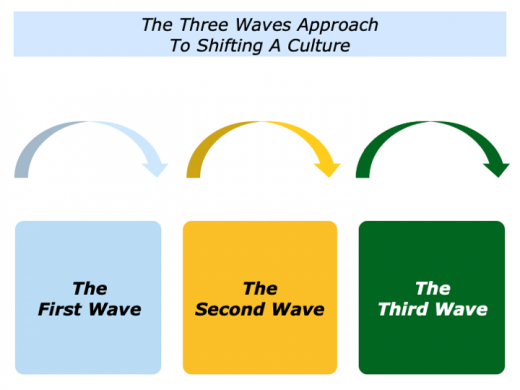
Imagine you are a leader. You have been given the authority to do whatever is necessary to shift an organisation’s culture. Some leaders invite the employees to change, but this seldom works.
Another approach is to use the three waves approach. This involves aiming to go through the following stages.
The First Wave
Building successful prototypes that embody the desired culture and produce success stories.
The Second Wave
Working with more people who follow the principles, deliver success and produce success stories.
The Third Wave
Making the principles mandatory, providing people with the support they need and keep producing success stories.
You then invite people to choose whether or not they want to be part of the new culture. Let’s explore this approach.
The First Wave: Building
Successful Prototypes
You can start by clarifying your picture of success. Start from your destination – perhaps 18 months in the future. Describe what you want to see happening at that date.
Working backwards, describe the things that must be achieved by the end of each quarter and work back to the present day. That is your road map towards achieving the picture of success. Then move onto the next stage.
Looking around the organisation, identify where you can build prototypes that will embody the future culture. These must stand at least a 7+/10 chance of success.
If you are running an organisation that covers a continent, for example, identify the country leaders who will support the approach.
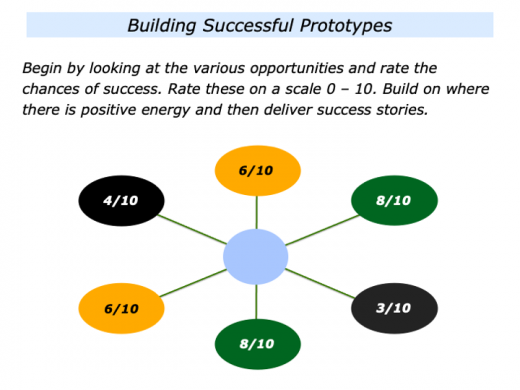
Good leaders communicate the organisation’s story, strategy and road to success. They aim to do this in a compelling way that resonates with people.
Explain to everybody in the organisation that you are building the future business. You would like volunteers who want to act as models. But make sure you have already earmarked three such places. Others may want to join, but make sure these are prepared to work hard to succeed.
This approach is the equivalent building a new house rather than renovating an old house. It is to build a new system that shows a better way.
Repairing an existing house – or an organisation – can be challenging. Sometimes changing a system meets resistance. Too much time can be spent trying to persuade people, rather than delivering the required results.
Shifting a culture sometimes calls for retaining the best elements of the old house but building a new house – a new way of doing things. One key point is worth underlining. It is important to have a long connecting corridor – some distance – between the old house and the new house.
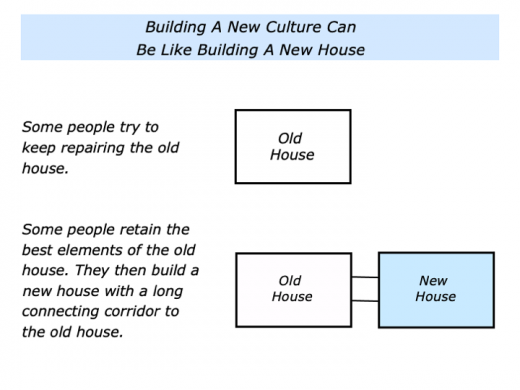
The new house may develop a different culture and a fresh way of doing things. There is no point in rushing back every half hour to ask if it is okay to do things in the new way. If you do that, the old system will take over.
You are aiming to build a new system that delivers the goods. Bearing this in mind, it is important to ring fence the fresh approach. At the same time, however, it is vital to deliver success.
Do everything possible to help people to build the successful prototypes. Get people to share the success stories at an organisational event. Then go onto the next stage.
The Second Wave: Working With Volunteers
Who Follow The Principles And Deliver Success
People have shown the approach works. So now ask for other volunteers to model the desired culture. There are certain Dos and Don’ts during this crucial stage.
Dos
Do be certain you have the right leaders in place in each of the next wave of models.
Do work with them on clarifying their picture of success.
Do make sure they follow the principles embodied in the new way of doing business – rather than simply modify their present ways.
Do encourage them to work through the potential tough decisions.
Do provide the support they need to do the job and encourage them to get some early wins.
Do help them to do whatever is required to achieve success.
Don’ts
Don’t back leaders who say the right words but don’t translate these into action.
Don’t be half-hearted – people need to be serious about making change happen.
Deadlines focus the mind. Give people a deadline for presenting their success stories at another organisational event in, for example, six months.
At the same time, encourage the first wave of prototypes to move onto a higher level. They can also present their new successes at the next organisational event.
There are many ways to build and maintain a positive culture. One approach is to show what good looks like by continually producing success stories. Below is one framework for producing such stories.
People choose a title for the story. They then describe the specific situation they encountered. They could be helping a client, solving a problem, making systems work better or whatever. They describe the challenges they faced and the desired picture of success.
People move on to describing the key strategies – such as the principles they followed – to tackle the issue. They describe the results that were delivered to achieve the picture of success. They then summarise what was learned from the experience.
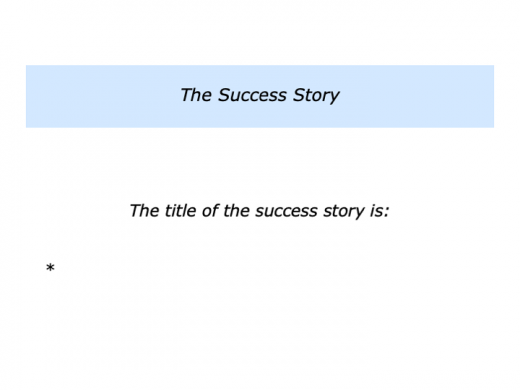
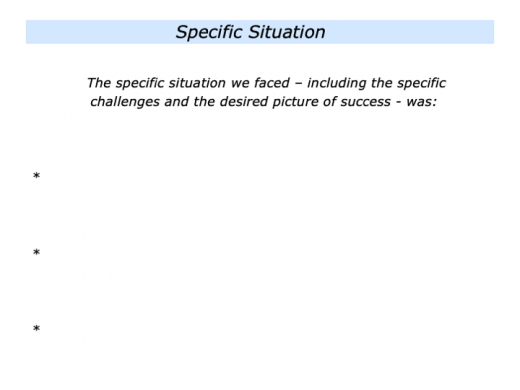
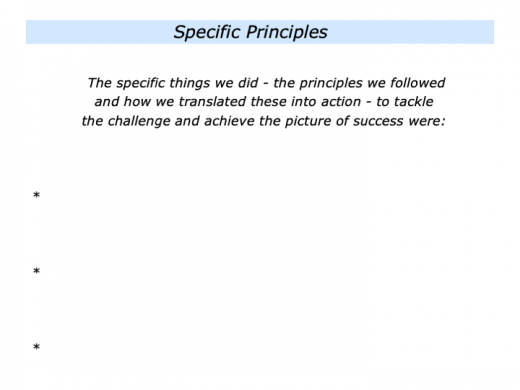
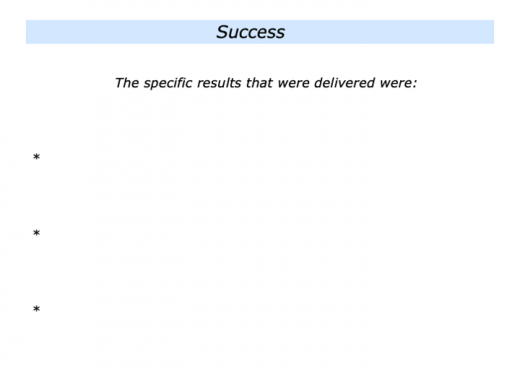
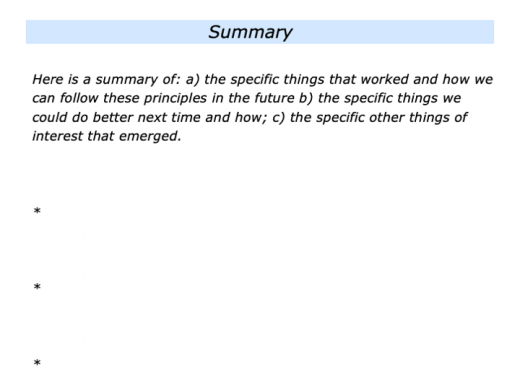
The Third Wave: Make The Successful Principles
Mandatory And Build The Desired Culture
The first and second waves of prototypes present their success stories.
You then give people clear messages about the behaviours that are necessary for the future culture, but the future is now. The message you are giving in the third wave is that:
The principles are now mandatory
People can choose whether or not they want to opt-into the new way of working. They are to communicate with you – or their manager – within a month to show how they would like to contribute to the organisation’s goals. You will also provide them with the support they need to achieve ongoing success.
If they do not want to take this route, then it may simply be a matter of ‘fit’. The organisation will do its best to find a good way for them to move-on.
Sounds tough? Perhaps – but not tackling this issue is even tougher. The future is beckoning, however, so you present the organisation’s new picture of success. People realise that you are announcing the next first wave. They can be part of shaping the future.
Many people ask: “How do you change a culture?” One approach is to say:
“You create a new culture rather than try to change the old one.
“It is up to people to decide if they want to follow the principles.
“If so, you encourage them to use their strengths to work towards achieving the picture of success.”
Imagine that you have taken this step. It will be important to ensure that the people who apply to the organisation know what they are getting into. How to make this happen?
One approach that has been re-invented by many organisations is to return to producing a Culture Handbook. This needs to be short, attractive and with lots of illustrations. (It is certainly not a procedure manual.)
The handbook is given to new joiners and shows examples of how people have lived organisation’s principles. It then invites people to focus on how they want to follow these in their own way and work towards achieving the goals.
Below is a framework that some organisations use for producing such a handbook. You can then encourage people to follow these principles to shape the desired culture.

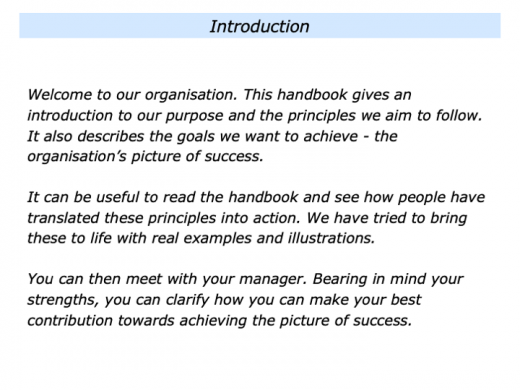
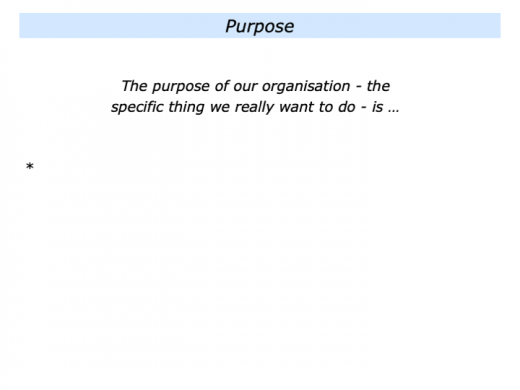
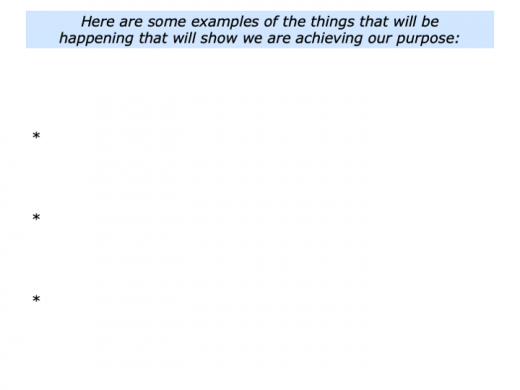
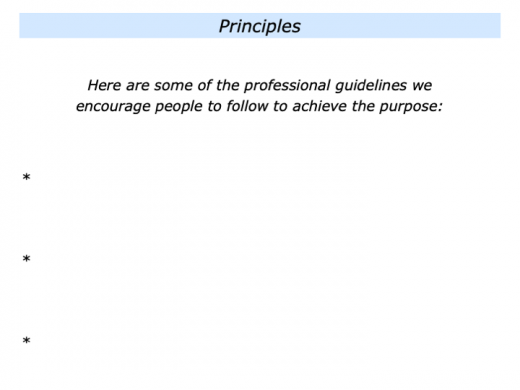
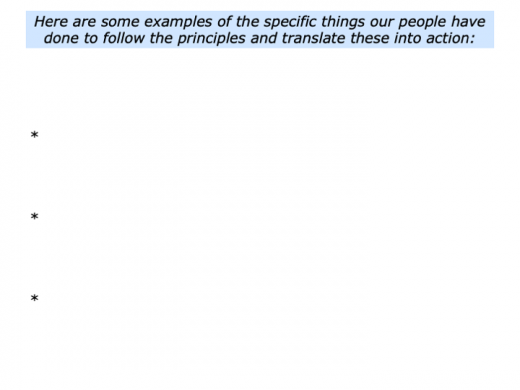
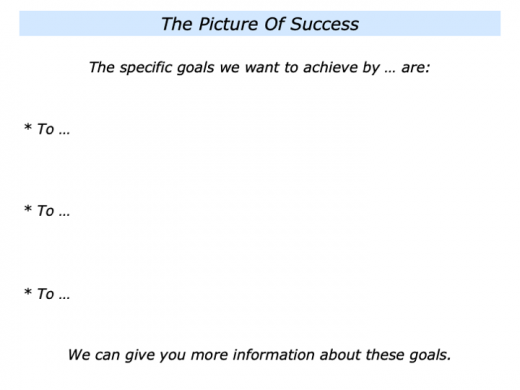
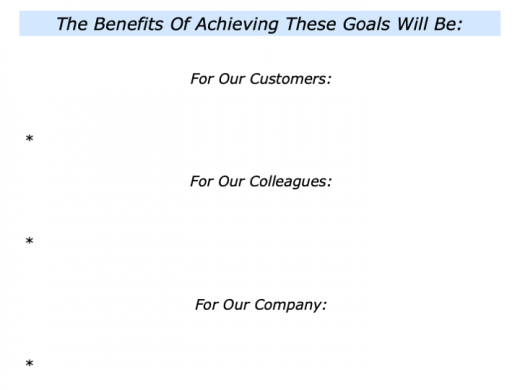
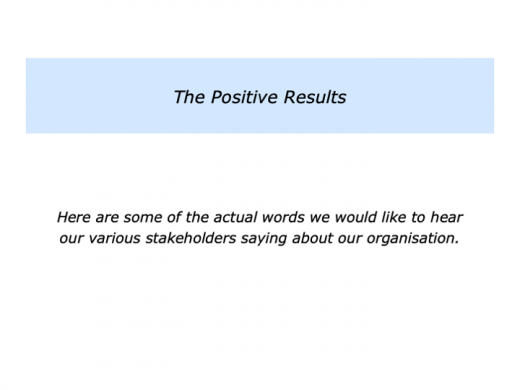


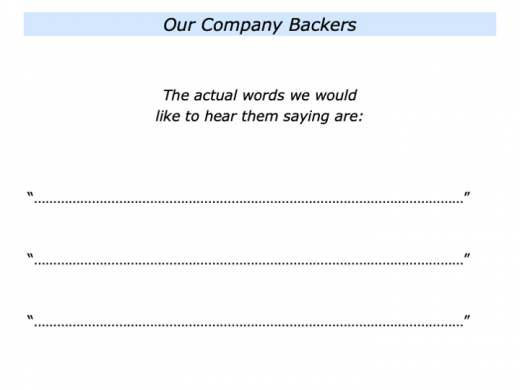
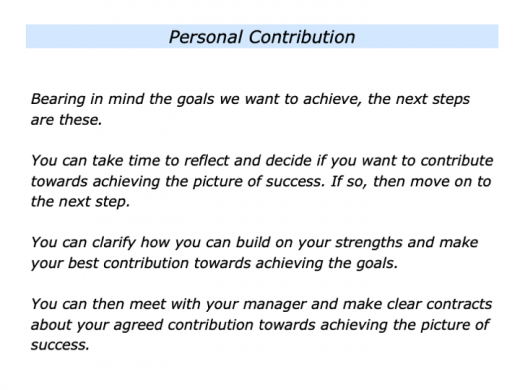






Leave a Reply